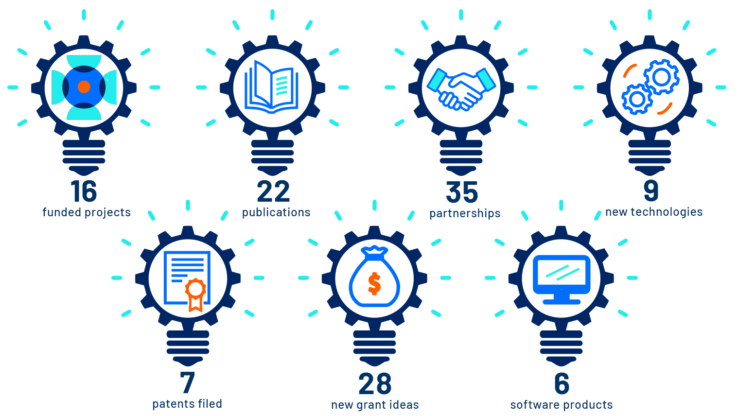Feb. 22, 2017
3 Bullets:
- ISB researchers developed a powerful new growth-analysis tool called ODELAY.
- ODELAY uses time-lapse microscopy to monitor growth of yeast cells and observe heterogeneity.
- The ODELAY platform has wide-ranging applications and enables quantitative measurements similar tools don’t offer.
By Thurston Herricks
Sometimes watching mold grow is incredibly informative. The common mold baker’s yeast that’s used for bread, beer and wine also has vast applications in basic, or foundational, science and biology research. In fact, many methods for genetically manipulating and studying organisms were first pioneered in yeast and then perfected in other organisms.

Colony areas are measured from thresholded and binarized images from the time course image series.
In a study published in the January 2017 issue of G3: Genes, Genomes, Genetics, scientists at Institute for Systems Biology introduce ODELAY, a powerful automated and scalable growth analysis platform that uses time-lapse microscopy to photograph individual yeast cells growing into colonies. ODELAY (One-cell Doubling Evaluation of Living Arrays of Yeast) enables researchers to investigate scientific questions related to microorganisms ranging from genetic functions to disease-causing pathogens to the development of drug-resistance.
The growth rate of yeast is an incredibly sensitive measure for quantifying the effects of altering its underlying genic makeup. The study demonstrates that, by using ODELAY, researchers can accurately quantify how altering genes or the environmental conditions affect growth. The tool can provide information about the structure of proteins, or protein complexes, or even how systems of genes and proteins interact to respond to stimuli such as a change in the environment.
Importantly, because yeast cells do not grow identically, ODELAY can quantify differences between individual cells that other methods cannot detect. These differences in growth of the population –or population heterogeneity – offer unique insights into gene regulation, gene functions, and genic interactions. In addition to watching yeast grow, ODELAY can observe any colony-forming microorganism such as algae or bacteria or pathogens that cause sepsis or tuberculosis. The applications for ODELAY are, indeed, wide-ranging.
Title: “One-Cell Doubling Evaluation by Living Arrays of Yeast, ODELAY!”
Journal: G3: Genes, Genomes, Genetics
Authors: Thurston Herricks, David J. Dilworth, Fred D. Mast, Song Li, Jennifer J. Smith, Alexander V. Ratushny, John D. Aitchison
Link: g3journal.org/content/7/1/279



 isbscience.org/research/introduce-one-cell-doubling-evaluation-living-arrays-yeast-odelay/
isbscience.org/research/introduce-one-cell-doubling-evaluation-living-arrays-yeast-odelay/

